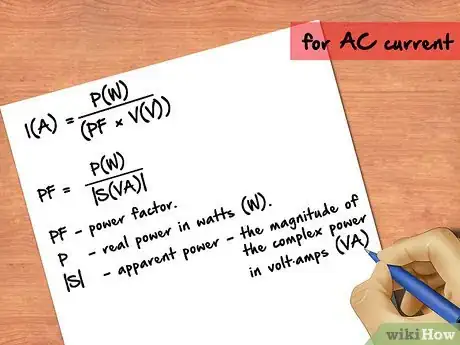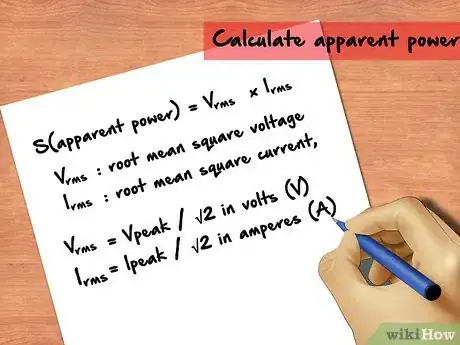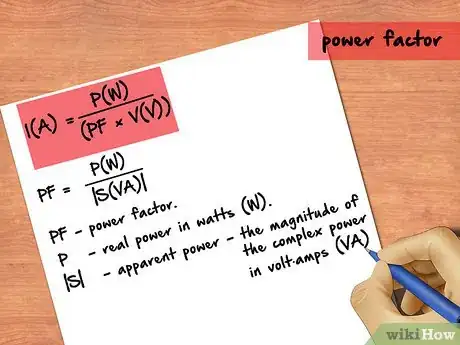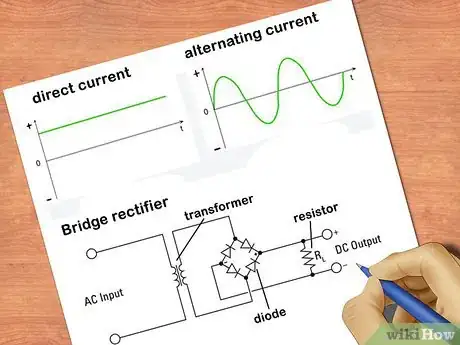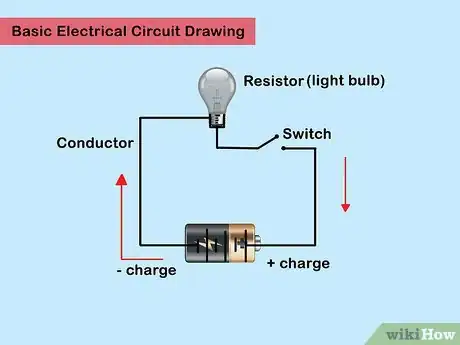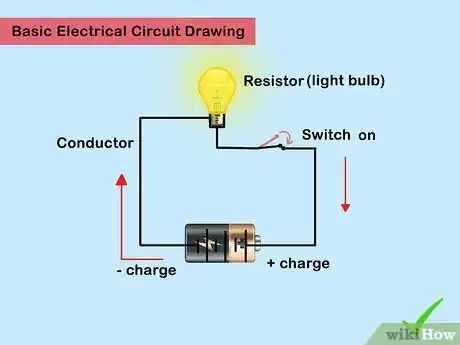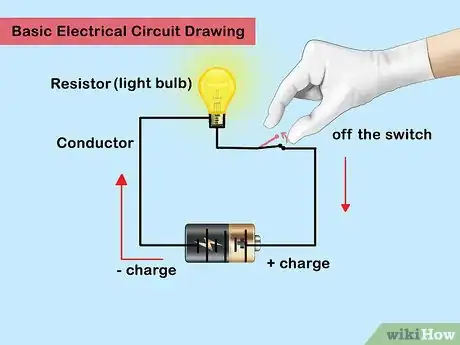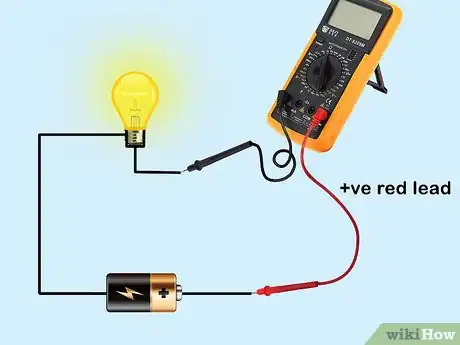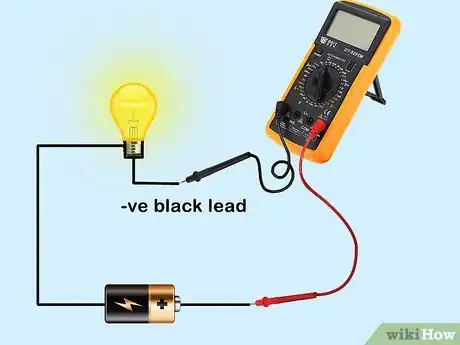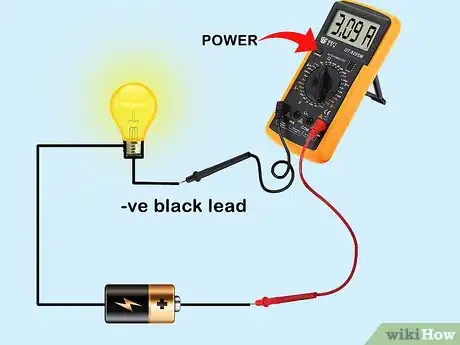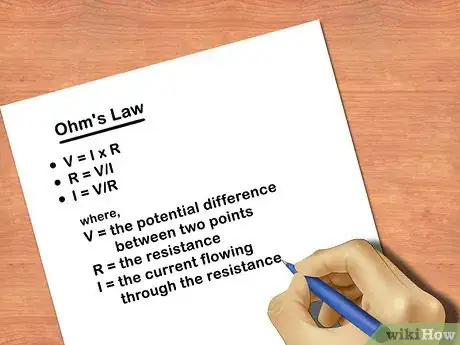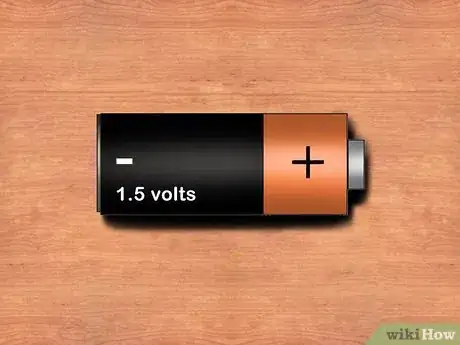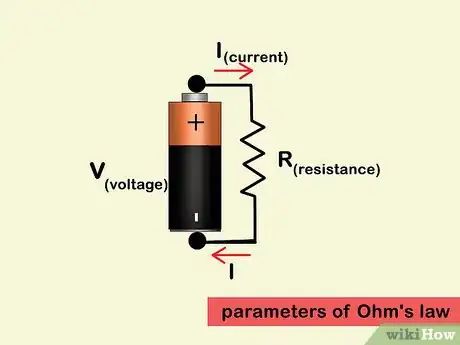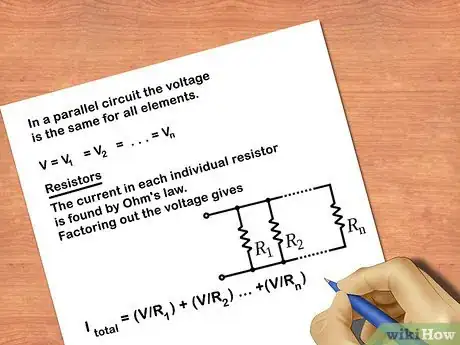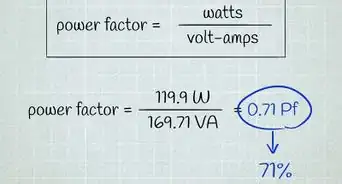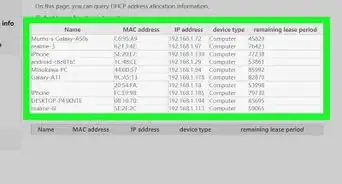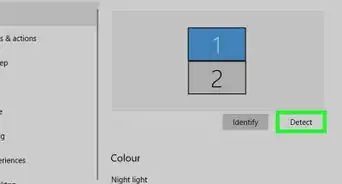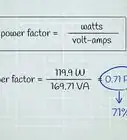This article was co-authored by Jesse Kuhlman. Jesse Kuhlman is a Master Electrician and the Owner of Kuhlman Electrician Services based in Massachusetts. Jesse specializes in all aspects of home/residential wiring, troubleshooting, generator installation, and WiFi thermostats. Jesse is also the author of four eBooks on home wiring including "Residential Electrical Troubleshooting" which covers basic electrical troubleshooting in residential homes.
There are 15 references cited in this article, which can be found at the bottom of the page.
This article has been viewed 113,829 times.
An ampere, shortened frequently to amp, is a unit of measure that is used for electrical current. Current is the measure of electrons that flow through a given circuit.[1] This information can be very useful in the event you are trying to connect a tool or appliance to the mains, which is the term used to describe the AC current that flows directly from an electric company's generating station to your household.[2] [3]
Things You Should Know
- You can easily convert watts to amps using a simple mathematical conversion formula.
- If you're working with a DC current, you can use an ammeter to measure amps or milliamps.
- You can also use Ohm's Law to divide the total voltage by each resistor's resistance in Ohms.
Steps
Convert Watts to Amps
-
1Apply the conversion formula for DC electricity. Electric current, represented by I, which is measured in amps (A), can be found by dividing power in watts (W) by the volts (V) of voltage. This is represented by the following formula:
- I(A) = P(W) / V(V)[4]
Or, more simply: Amps = Watts / Volts
- I(A) = P(W) / V(V)[4]
-
2Understand power factor (PF) for AC electricity problems. Power factor is a ratio representing the real power used to do work and the apparent power supplied to an alternating current circuit, a value ranging from 0 to 1. Therefore, power factor is your real power P, in watts, divided by your apparent power S, measured in Volt-amper (VA), or:
- PF = P / S[5]
Advertisement -
3Calculate apparent power to find your power factor. Apparent power can be calculated by
S = Vrms x Irms where S is the apparent power in Volt-amper (VA), Vrms is your root mean square voltage and Irms is your root mean square current, both which can be found by solving the following:
- Vrms = Vpeak / √2 in volts (V)
- Irms = Ipeak / √2 in amperes (A)
-
4Use the power factor for single phase AC electricity. Your single phase current will be represented by I and measured in amps (A), and can be calculated by dividing the real power (P) measured in watts (W) divided by a power factor (PF) multiplied by the root mean square (RMS) voltage as measured in volts (V). This is represented by:
- I(A) = P(W) / (PF x V(V)
Or, more simply: Amps = watts / (PF x Volts)
- I(A) = P(W) / (PF x V(V)
Measure Amperage with an Ammeter
-
1Determine whether your current is AC or DC. DC electricity, or direct current electricity, is electrical current that flows in a single direction. If your circuit is powered by a battery, the current used will be DC.[6] AC, or alternating current, will
- Almost everything in your house will be DC. Outlets, light fixtures, and the like are almost always going to be DC.
- In most countries, the electricity provided by utility mains is AC current (also called alternating current).[7] AC current can be converted to DC current, but only through the use of a transformer, a rectifier, and a filter.[8]
-
2Determine the path of electricity. To take the reading of the amperage of your circuit, you will need to tie your ammeter into your circuit. Follow the positive and negative ends of your battery and the connecting wires to find the circuit path.
-
3Test your circuit. If there is a break in the circuit or a flaw with your battery, your ammeter will likely not be able to gauge (or will not gauge accurately) the current of your circuit. Turn on your circuit to see if it is functioning normally.
-
4Switch off your circuit. For some simple circuits, this might require removing the battery completely. With more powerful batteries, there is a possibility that you could be shocked, so take care to make sure the circuit is off. If you are unsure, use insulated rubber gloves to prevent getting shocked.
-
5Tie in the positive end of your ammeter. You ammeter should have come with two leads: one red and one black. The red lead is your positive end (+) and the black your negative (-). Take the wire leading from the positive end of your battery and tie the end leading away from your battery to the positive end of your ammeter.[9]
- The ammeter will not interrupt the flow of electricity, but as current flows through the meter, it will measure the current, causing a reading to display.
-
6Complete the circuit with the negative lead of your ammeter. Take the black (-) lead from your ammeter and use it to complete the circuit you have just broken. Clamp the lead onto the location where the wire you have tied to your positive lead would have fed into its destination in the circuit.[10]
-
7Turn on your circuit. This might simply mean reinstalling your battery, but when you do so, your device should turn on and your ammeter should read the current in either amps (A) or milliamps (mA) for smaller current devices.[11]
Calculate Amperage with Ohm's Law
-
1Familiarize yourself with the concept of Ohm's Law. Ohm's Law is an electrical principle that establishes a relationship between the voltage and current of a conductor.[12] Ohm's law is represented by the formulas V = I x R, R = V/I, and I = V/R, with the letter terms defined as:
- V = the potential difference between two points
- R = the resistance
- I = the current flowing through the resistance[13]
-
2Determine the voltage of your circuit. If your circuit runs on a 9-volt battery, you already have part of the equation. You can find the specific voltage of the battery you are using by checking the packaging in which it came or doing a quick online search.
- Most common cylindrical batteries (AAA through D) provide approximately 1.5 volts when fresh.
-
3Find the resistors in your circuit. You will need to know what kind of resistor is part of your circuit and how much resistance it is creating to the electricity flowing through it. Since each circuit will be different (some simple circuits may not even have resistors), you will have to investigate your circuit and locate the resistors for your unique case and their resistance in Ohms (Ω).
- The wiring your electricity flows through will also have resistance. This will likely be negligible, unless the wiring is very poorly manufactured, damaged, or your circuit conducts electricity over a long distance.
- The formula for resistivity is as follows: Resistance = (resistivity x length)/area[14]
-
4Apply Ohm's Law. Due to the fact that battery voltage is applied to the circuit entirely, to approximate the current of your circuit you will need to divide the total voltage by each resistors resistance, with resistance being measured in Ohms (Ω). Your resulting answer will be the current (I) in amps (A), solved with the following calculation:
- (V/R1) + (V/R2) + (V/R3), where V represents the total voltage and R represents a resistors resistance in Ohms.[15]
Warnings
- Whenever dealing with electricity, you should exercise caution. You could be shocked, or when working with high voltage, start an electrical fire. It is recommended that you wear insulated gloves.⧼thumbs_response⧽
References
- ↑ http://www.qrg.northwestern.edu/projects/vss/docs/power/2-what-are-volts-amperes.html
- ↑ http://www.passmyexams.co.uk/GCSE/physics/mains-electricity-fuse-the-earth-wire.html
- ↑ http://www.gcsescience.com/pe34.htm
- ↑ http://www.rapidtables.com/convert/electric/Watt_to_Amp.htm
- ↑ http://www.rapidtables.com/electric/Power_Factor.htm
- ↑ http://whatis.techtarget.com/definition/DC-direct-current
- ↑ http://www.greenfacts.org/glossary/abc/alternating-current.htm
- ↑ http://www.dummies.com/how-to/content/how-power-supplies-turn-ac-into-dc-in-electronic-c.html
- ↑ https://www.allaboutcircuits.com/textbook/experiments/chpt-2/ammeter-usage/
- ↑ https://www.doityourself.com/stry/how-to-use-an-ammeter#b
- ↑ http://www.archtoolbox.com/representation/abbreviations/electabbrev.html
- ↑ https://www.physics.uoguelph.ca/tutorials/ohm/Q.ohm.intro.html
- ↑ http://www.hamuniverse.com/ohmslaw.html
- ↑ http://hyperphysics.phy-astr.gsu.edu/hbase/electric/resis.html
- ↑ http://hyperphysics.phy-astr.gsu.edu/hbase/electric/dcex2.html
About This Article
1. Convert watts to amps using the formula Amps = Watts / Volts.
2. Use an Anmeter.
3. Use Ohm's Law.

